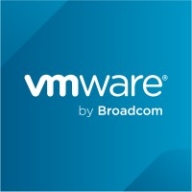

StreamSets and Spring Cloud Data Flow compete in the data integration and orchestration category. StreamSets offers advantages in user-friendliness and data transformation capabilities, making it the preferred choice for those emphasizing ease of use and flexibility in design.
Features: StreamSets offers a drag-and-drop interface for data pipeline creation, supports both batch and streaming data processing, and provides robust data transformation capabilities at the source. Its control hub facilitates graphical design with flexibility. Spring Cloud Data Flow is notable for its microservices orchestration, integration with Kubernetes, and support for low-resource execution using a simple programming model.
Room for Improvement: StreamSets needs better integration with non-Java platforms, enhanced memory management, and improvements in its security features and user interface. It also requires expanded SAP HANA capabilities and more effective data drift handling. Spring Cloud Data Flow could benefit from better community support, enhanced documentation, and improved UI for Kubernetes integration. Additional support for non-Java languages would also be beneficial.
Ease of Deployment and Customer Service: StreamSets provides versatile deployment options across public and hybrid clouds and generally responsive support, although complex issues may require time. Spring Cloud Data Flow is well-suited for private cloud environments but relies heavily on community forums for support, making professional assistance necessary for more challenging deployments. StreamSets facilitates easier cloud deployments, while Spring Cloud Data Flow is ideal for those adept at self-support in private solutions.
Pricing and ROI: StreamSets offers a range of licensing options, including open-source and commercial, but faces criticism for its cost structure, making it less attractive to smaller enterprises. It offers significant ROI for larger organizations in need of comprehensive ETL solutions. Spring Cloud Data Flow provides value through its free open-source model, being cost-effective for community edition users. StreamSets reports increased sales of up to 50%, while Spring Cloud Data Flow is ideal for budget-conscious users seeking open-source capabilities.
| Product | Market Share (%) |
|---|---|
| Spring Cloud Data Flow | 1.2% |
| StreamSets | 1.5% |
| Other | 97.3% |


| Company Size | Count |
|---|---|
| Small Business | 3 |
| Midsize Enterprise | 1 |
| Large Enterprise | 5 |
| Company Size | Count |
|---|---|
| Small Business | 9 |
| Midsize Enterprise | 2 |
| Large Enterprise | 11 |
Spring Cloud Data Flow is a toolkit for building data integration and real-time data processing pipelines.
Pipelines consist of Spring Boot apps, built using the Spring Cloud Stream or Spring Cloud Task microservice frameworks. This makes Spring Cloud Data Flow suitable for a range of data processing use cases, from import/export to event streaming and predictive analytics. Use Spring Cloud Data Flow to connect your Enterprise to the Internet of Anything—mobile devices, sensors, wearables, automobiles, and more.
StreamSets is a data integration platform that enables organizations to efficiently move and process data across various systems. It offers a user-friendly interface for designing, deploying, and managing data pipelines, allowing users to easily connect to various data sources and destinations. StreamSets also provides real-time monitoring and alerting capabilities, ensuring that data is flowing smoothly and any issues are quickly addressed.
We monitor all Data Integration reviews to prevent fraudulent reviews and keep review quality high. We do not post reviews by company employees or direct competitors. We validate each review for authenticity via cross-reference with LinkedIn, and personal follow-up with the reviewer when necessary.